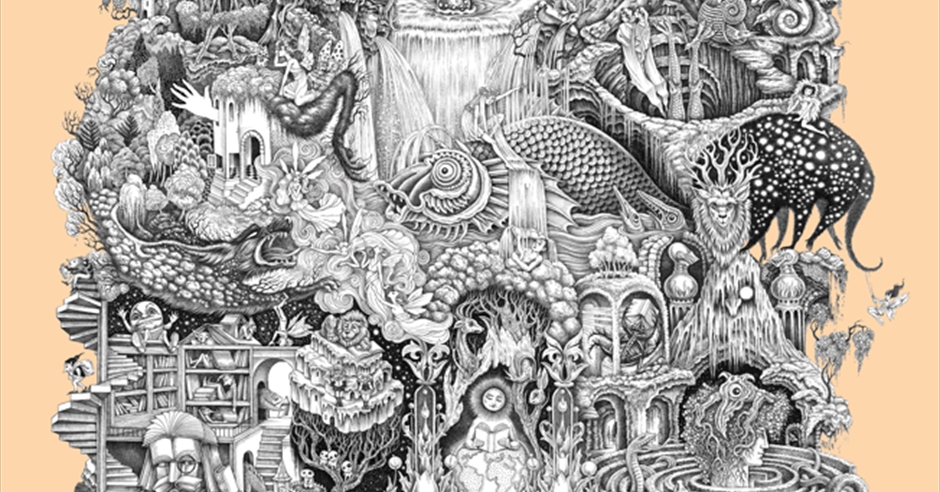
The exhibition Gabrielle Chanel. Fashion Manifesto was actually sold out, but then the V&A released more tickets for Friday evenings, and I managed to get one. I was very glad to get the chance to see this exhibition, the first in the UK dedicated to Gabrielle ‘Coco’ Chanel. Featuring over 200 looks, it explored the establishment of the House of CHANEL and the evolution of her unique style of design, which continues to influence how women dress today. Curated by Oriole Cullen, it is expanded from a show first created at the Palais Galliera in Paris in 2020.

I have to admit I am not the biggest fan of the Chanel style. I prefer designers like Dior, with a Fifties-style silhouette and wider use of colour. However, I can appreciate the deceptive simplicity of her designs and the craftsmanship behind her looks, as well as the influence she has undoubtedly had on fashion through the ages.
There are lots of beautiful outfits in the exhibition, some arranged chronologically, others thematically. Black dresses make up one key group; suits another, including one pink set belonging to Lauren Bacall. I did enjoy looking at them, and tracing the evolution of Chanel’s style throughout the decades, taking on elements from outside but still remaining definitively Chanel.

It’s certainly impressive how a poor, illegitimate woman born in 1883 was able to rise to the heights that she did. Placed in a convent aged eleven after the death of her mother, she was taught to sew by the nuns and worked as a seamstress alongside her aunt after leaving school. With the help of a textile heir, Étienne Balsan, she moved to Royallieu, northern France, and sold hats to his friends. In 1910, an English lover, Arthur ‘Boy’ Capel, enabled her to open the first Chanel boutique in Paris. In 1918 she established her couture house in the city, and her empire grew from there.

Some rooms focus on her cosmetic and perfume creations – Chanel No. 5 is still one of the more popular scents worn by women today. Other elements explore her relationship with Britain: she had romances with several British figures, including the Duke of Westminster, and knew Winston Churchill, who painted a picture of her. I was interested to learn about her connection to British manufacturing: one item on display is a red evening gown in silk velvet, made for Chanel by the Manchester Velvet Company in 1932. The designer established a company, British Chanel Ltd., in the 30s to allow for her designs to be manufactured in British fabrics including Nottingham lace and Northern Irish linens.

There have been suggestions over the years that Chanel was a supporter of the Nazis. She certainly took up with a German spy, Hans Günther von Dincklage, during the occupation of Paris. In 1941 the Nazis recorded her as a trusted source, but recent research suggests she was also an occasional agent for the French resistance. My instinct, to be honest, is that she did whatever she could to survive and thrive regardless of which ‘side’ she was helping – but I honestly don’t know enough about it to comment seriously.
I did enjoy the exhibition, which was fascinating and very thorough, and I’m really glad I got the chance to see it.





















